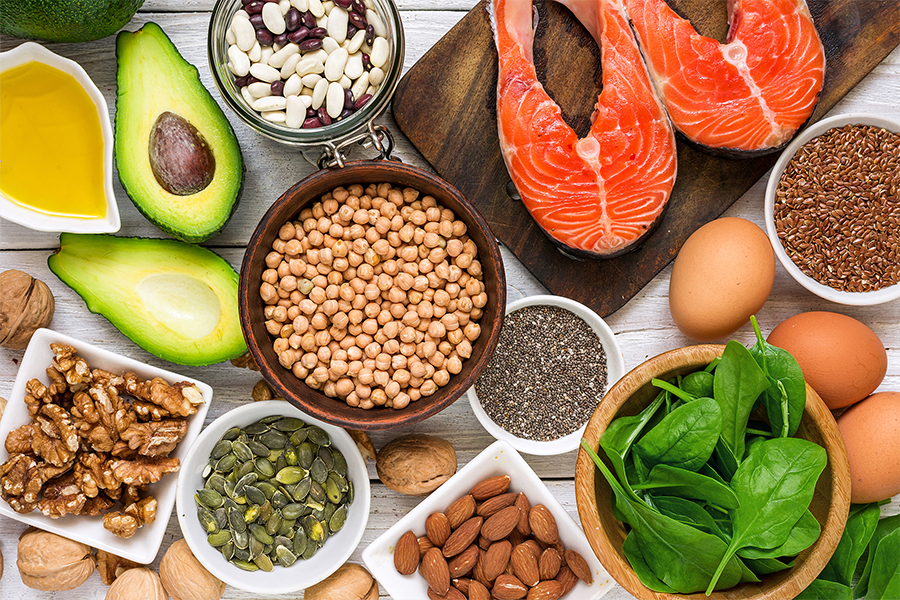Using Food as Medicine
Starting down the road of living a healthier lifestyle may be overwhelming and confusing at first. With so much information available, sometimes it’s hard to know where to turn. Dr. Angie Neison, Co-Medical Director of VEBA, specializes in Culinary Medicine and explains how food can prevent and even heal disease. In this two-part blog series, you will learn 10 healthy tips you and your family can easily incorporate to start or maintain a healthy lifestyle.
Food is Medicine
Food means different things to different people. It’s how we nourish ourselves. It’s what we feed our growing families. It’s how we show love at a family gathering. It’s sometimes how we connect with others. But did you know that food can keep you out of the hospital?
Growing up, Dr. Neison spoke three languages: English, Spanish, and “food as medicine” — a concept she was introduced to at a very young age. When her mother was 16, Dr. Neison’s grandfather was hospitalized due to complications from diabetes and learned how he could use food to help control his condition. In an effort to help her family become more healthy, Dr. Neison’s mother learned as much as she could about how eating more plant based could help people optimize their health. In doing so, her mother broke the cycle of chronic disease for her family and taught her children from an early age about “food as medicine,” or culinary medicine.
According to Nutrition.org, culinary medicine is an educational and nutritional approach to improving eating behaviors, focusing on skills such as food shopping, storage and meal preparation. Simply speaking, it is the art of cooking food with the science of medicine to optimize a person’s health. Culinary medicine is natural and effective, and has reversed chronic disease for some, according to Dr. Neison. She has made it her mission to teach others about the importance of food and how it can heal and prevent disease, as well as nurture one’s body, mind and soul.
Healthy Living Tip #1: Eat Plants
Living healthy is not just about food and exercise, you need to nourish your spirit – it’s all connected! Yes, you could take vitamins and supplements but by eating more plants, such as fruits and vegetables, you can get what you need from the food you eat. Every time you prepare your meal, use your plate as a guide:
- Make an imaginary line down the middle of your plate.
- On one side you should have all plants — fruits and vegetables. On that side, more than a quarter, about 30-35% should be vegetables and the other 20-15% should be fruit. Always include a variety and a lot of color!
- On the other side, divide it similarly with 30-35% as whole grains and the other 20-15% with protein. Incorporate beans, legumes, nut and seeds!
By adding more fruits and vegetables to your daily menu, you will nourish your mind, body and soul.
Healthy Living Tip #2: Good Fats
Not all fats are created equal! There are good fats and bad fats. To add more good fats to your diet, consume items with Omega 3 rich fats. The benefits include:
- Boosted immunity.
- Reduced dementia risk.
- Helps heart disease and pain.
Cooking with Omega 3 foods such as walnuts, flax seeds, chia seeds, salmon, anchovies and Omega-3 rich oils like extra virgin olive oil and avocado oil can improve your mood!
Healthy Living Tip #3: Get Familiar With Whole Grains
Just like fats, not all carbohydrates are created equal. When we eat whole carbohydrates with all three layers of the grain — minerals, protein and fiber — we consume more in its entirety. However, when we consume refined carbohydrates, like white bread, sugar or pasta, all of the bran, fiber and nutrients have been stripped. Make healthier choices by swapping out common household items like white breads, pastas and rice for whole grain options like whole grain breads or whole wheat pasta.
Dr. Neison suggests choosing foods with a carb-to-fiber ratio less than 10 such as quinoa, oats and farro. What’s a carb-to-fiber ratio? Finding it is easier than you think! Simply look at the label of the food you are wanting to eat, divide the carbohydrates into the fiber and if the answer is less than 10, you have made a healthy choice!
Healthy Living Tip #4: Eat for the Planet
You are probably doing your part to help take care of our planet by recycling, conserving water and saving electricity. But did you know you can do even more to help by eating for the planet? The food you eat contributes to Mother Nature’s well being!
Eating more plants, in general, is better for human and the planetetrial health, according to Dr. Neison. Eating meat on a regular basis increases environmental stress for water, land and greenhouse gas emissions. Reducing meat consumption — even if you use half ground beef and half mushrooms for a burger — will not only help your waistline, but also your environmental footprint. Or, consider Meatless Mondays where you eat no meat and only fruits, vegetables and grains.
Healthy Living Tip #5: Feel Good About Accomplishments
No matter how big or small, it’s always a great practice to feel good about your accomplishments. After all, it’s the little things that add up to make a big difference. While cooking more at home is a big accomplishment, adding small bursts of physical activity has an impact, as well.
While you are waiting for your water to boil, do a set of lunges or squats around your kitchen. Or, make it a habit to take a 5-10 minute walk after lunch and dinner. Sitting down to watch your favorite show? Do some sit-ups during the commercial break. Together, these little accomplishments and the other healthy living tips, will start to add up and make a difference in your life.
Continue reading “Healthy Living Tips to Promote Health for You and Your Family: Part 2“









